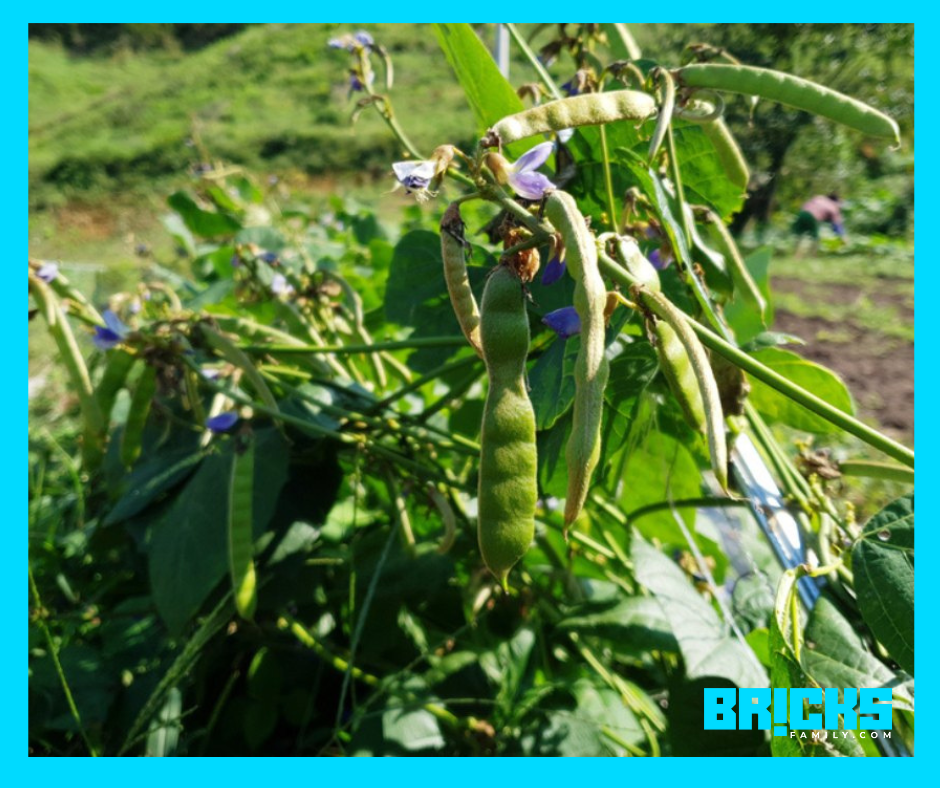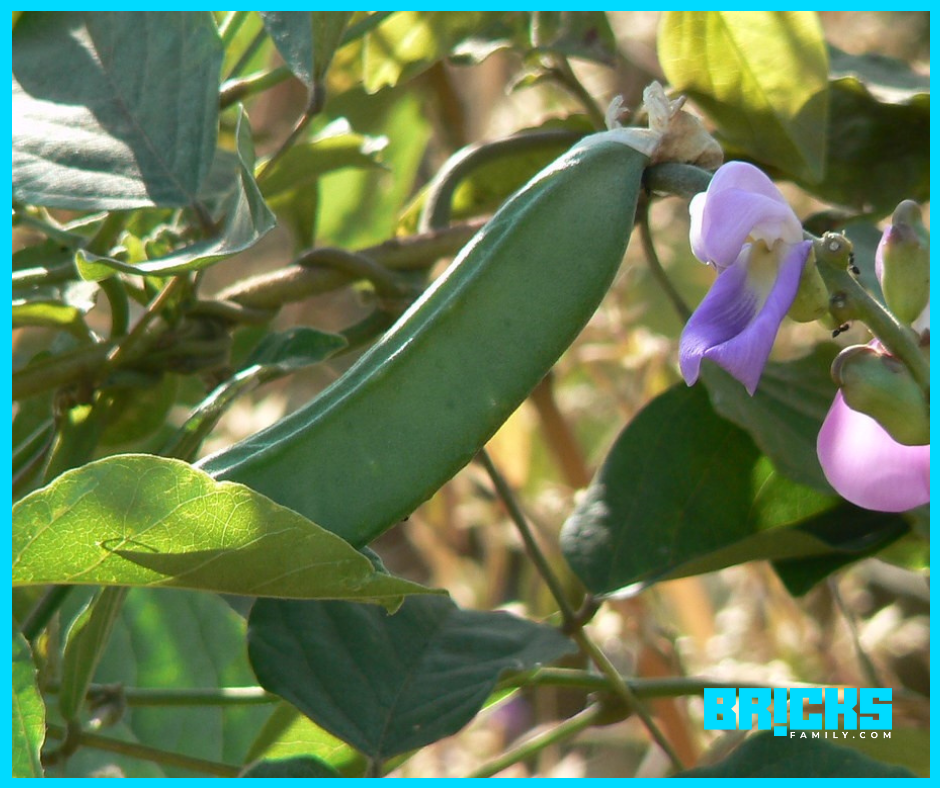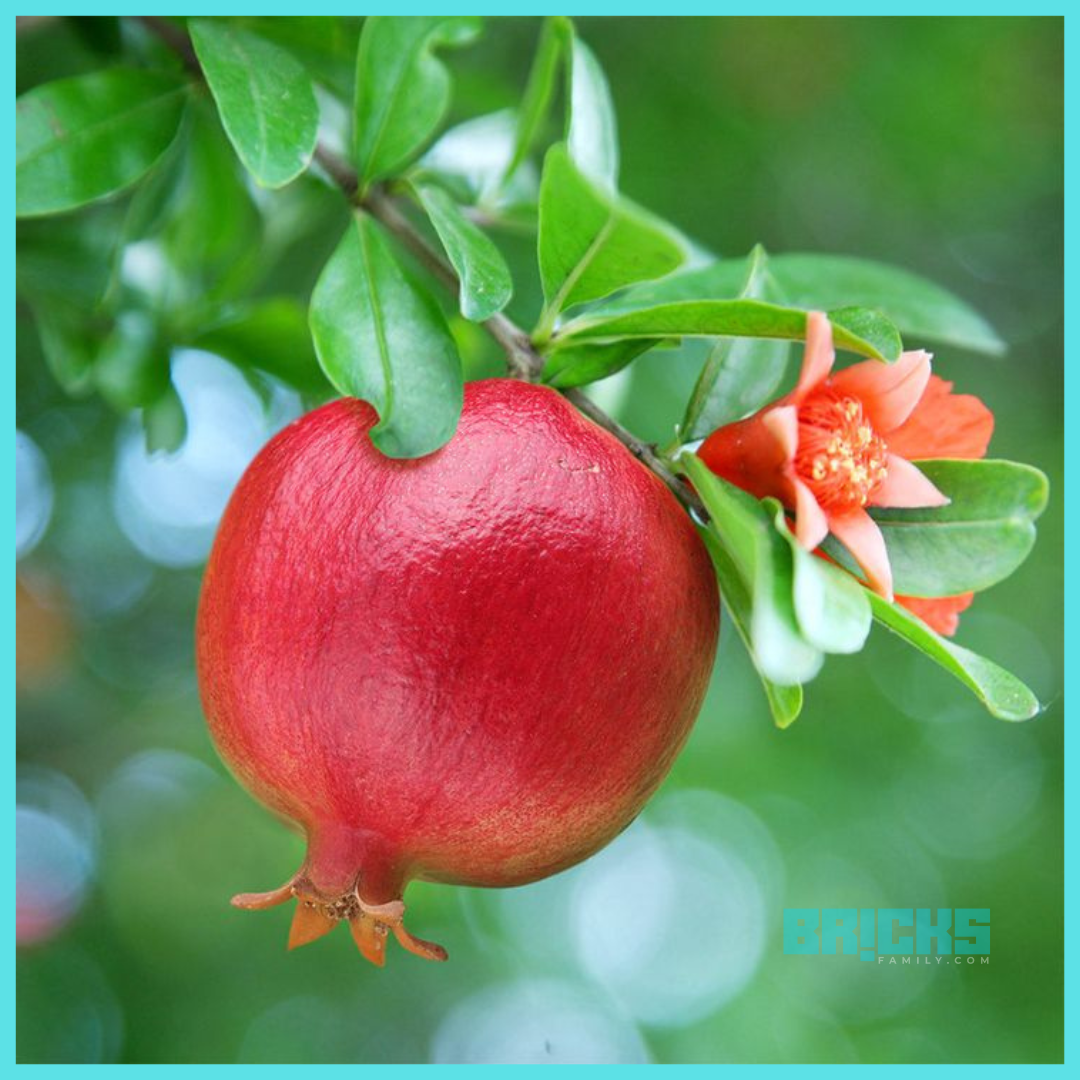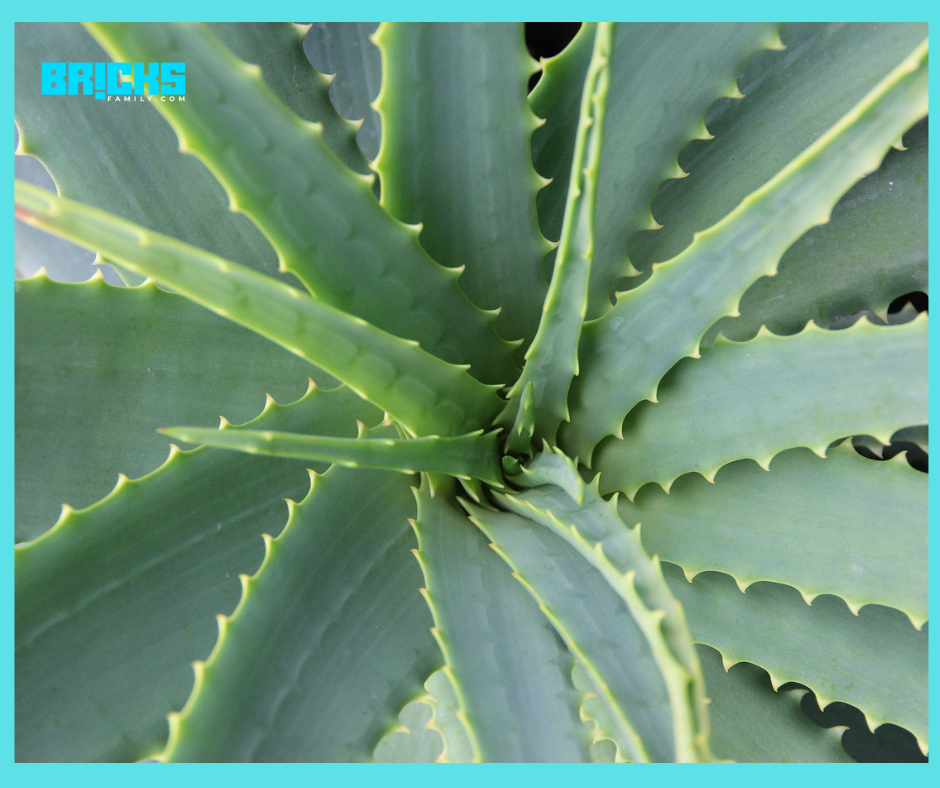It is a Sword bean (Canavalia Gladiata L.) A tropical food legume is not widely used. It is a plant and fodder crop and is rich in protein. It is widely grown as a fodder crop in the northern and peninsular regions of India and the Eastern and Western Ghats of South India. Numerous beneficial agronomic traits include high biomass production and disease resistance, pests, high fertility index, drought tolerance and high seed yield in fertile soils, allowing the plant to flourish in tropical climates. Chemicals that inhibit nutrition are the principal reason the seeds aren’t commonly used for food or livestock.
The sword bean is available in two forms. The red-seeded varieties are ablaze over pandals. White-seeded varieties are bushy in their characters.

When bush-type types are planted at 60 x 60 centimetres, pole-type types should be planted at a distance of 4 3 meters. The usual planting seasons are from May to June and September to October, and only one or two seeds should be planted per pit.
In addition, it could be grown as a shade crop, intercrop, or even an ornamental crop. Tamil Nadu is the sword bean home. SBS 1.
Sword Bean facts
| Genus | Gladiata Canavalia |
| Plant Division | (Flowering Seed Plants) Angiosperms (Dicotyledon) |
| Lifespan | Perennial |
| favorite climate zone | Monsoonal, tropical, and subtropical |
| Features | Ornamental Fruits |
| Family | Fabaceae (Leguminosae) |
| Distribution Technique | Seed |
| Leaf Type | Compound (Trifoliate) |
Plant Description for Sword Beans
- Growth Form – It is a climbing plant that, in ideal conditions, could grow about 10 metres.
- Stems The three oval leaflets comprise the compound leaflets.
- FlowersIt’s an inflorescence shaped like a raceme with 10-15 white or light purple flowers. Each bloom is approximately 3 centimetres long.
- Fruits –The fruit in the shape of swards is 20 to 35 centimetres across and 3 to 6 centimetres in width. Numerous reddish seeds can be seen inside every pod.
- Cultivation – In the humid tropical region in South and Southeast Asia, sword bean is widely cultivated to be eaten locally. It thrives in humid conditions that are characterized by the full sun. It is tolerant of partial shade and various rain patterns.
- Plants used for ethnic purposes(e.g. Edible plant components (Edible Seeds)
The young leaves, pods and stems of this fruit and vegetable are eaten raw or cooked, either steamed or boiled. As maturing or dried seeds (sword beans) contain toxic proteins that are poisonous, they are typically cooked with two or three variations of water before the hard seed coatings are removed. They are considered an essential diet for pregnant moms within India.)
Medical (Researchers discovered sword beans possess anti-oxidant properties.)

The Growing of Sword Beans: a reference
Sword beans are easily grown in your home garden. The beans grow after approximately 100 days and require about six weeks to mature. Here’s how you can grow sword beans in your garden.
- Sword beans can be bought-All you need to do to cultivate sword beans to plant them in the ground and allow them to grow. Seeds of sword bean are sold in nurseries, or you can buy them from the local supermarket.
- Prepare your toilet and your soil ready. Although they could thrive in soils that are acidic or neutral, they prefer pH ranges that range from 5.0 up to 6.0. Sword beans fix nitrogen, just like most beans, so fertilizers are unnecessary. To avoid pooling and root rot, you need to loosen the soil to provide adequate drainage.
- Choose the location you wish to plant the seeds of sword beans. They are best planted in areas with at least six hours of sun each day. It is recommended to provide a trellis or some other form of support for your sword beans to climb, as they love climbing and will require support for their tendrils trailing. To keep the plants off the ground and away from the sun, you can wrap them around an object or fence.
- Start your seedsIf you’re planting multiple species in the same area, make a hole for seeds about two inches deep. It would help if you left about an inch between every plant.
- Make sure your seeds are irritated when you plant seeds, then sprinkle water on them. Following that, you should keep the soil moist but not completely saturated with water. Six weeks will pass before the plant starts to bloom.
- Verify for password beans are generally healthy and pest-free, but occasionally aphids and grasshoppers consume the flowers and leaves. This could reduce your yield. So, be sure to check regularly for pests.
- Choose your beans word beans to seed pods to require a minimum of 100 days to fully mature. However, selecting mature pods will reduce the likelihood of being sick from eating the pods. Ripe pods range from approximately 10-12 inches long and appear waxy and may have some indentation across the skin that the beans have formed. To take the beans home, you need to pinch off the pod near the blooming tip of the plant.
The Growing of Sword Beans: a reference
Sword beans are easily grown in your home garden. The beans grow after approximately 100 days and take around six weeks to develop. Here’s a step-by-step guide to growing sword beans in your garden bed that you have created on your own.
- Sword beans can be bought-All you need to do to cultivate sword beans is to put them in the soil and let them sprout. Seeds of sword bean are sold in nurseries, or you can buy them directly from the supermarket.
- Prepare your toilet and your soil prepared; although they can grow in acidic or neutral soils, Sword beans prefer pH ranges between 5.0 and 6.0. They fix nitrogen like most beans; consequently, fertilizer is unnecessary. To stop the formation of pools and root rot from occurring, loosen the soil so that it can provide adequate drainage.
- Select the area you would like to plantSword bean seeds are best planted in areas with a minimum of six hours of sunshine each day. It is recommended to provide a trellis or some other form of support for the sword beans to climb, as they love climbing and require additional support for their tendrils trailing. To keep the plants off the ground and away from the sun, you can wrap them around an object or fence.
- Seed your seedlings. You’re planting multiple seeds in one area, making a hole for the seeds approximately two inches deep. It would help if you left about an inch between every plant.
- Make sure your seeds are irritated when you plant your seed, and then make sure to water them. Then you should keep the soil moist but not soggy. Six weeks will pass before the plant starts to blossom.
- Verify for password beans are typically healthy and pest-free, but sometimes, aphids and grasshoppers consume the flowers and leaves. This can reduce the yield of your crops; therefore, make sure you look for pests regularly.
- Selecting your beans to seed pods requires a minimum of 100 days to fully mature; however, choosing young pods lowers the chance of being sick from eating the pods. Ripe pods measure approximately 10-12 inches long, appear waxy, and have some indentations all over the surface that the beans have developed. To take the beans home, you need to pinch off the pod near the flowering point of the plant.
The benefits of sword Beans
- Blood sugar reduction The most remarkable aspect of the processing of sword beans is their protein content, which is typically about 27%, which is increased to nearly 33%. They have a high protein content and a healthy nutritional profile that includes fibre and fat. Like the many benefits of cucumber in health and diet, it isn’t just suitable for diets with diabetes. It can also increase the feeling of satisfaction within the body.
- Lowering the likelihood of developing heart disease reduces the risk of developing heart disease. It is generally accepted that the fats without saturated in the health benefits of sword beans are essential for maintaining the health of your heart. Its high protein and fibre, which play an important part in regulating blood sugar and cholesterol, are a further positive aspect.
- The streamline of blood flow Cup of sword beans yielded 36 grams of insoluble fibre as per the research findings. Cholesterol levels in the blood can be kept at a minimum through the use of soluble fibre. The soluble fibre helps lower levels of cholesterol that harm your body and improve blood circulation. Learn more about the benefits that black bean burgers offer to your well-being.
- Reduce the dangers of hypertension One of the diseases that can be avoided by using sword beans is that it is closely tied to the condition of blood flow and the heart’s health. The more smooth the flow of blood towards the heart is aided by the proper functioning of the heart and the less risk of high blood pressure. Peanuts are rich in protein, as is soluble fibre.
- For fighting cancer, Sword beans are the ingredients of the Taiwanese herbal treatment for cancer. Sword beans are an excellent source of flavonoid and phenolic chemical compounds. The two compounds found in the sword beans function as antioxidants that fight free radicals. One could lead to the growth of cancerous cells because of the resemblance of sword beans to other varieties of beans with beneficial antioxidant properties to treat cancer.
The propagation process from Sword Beans
Certain species of Genus Canavalia include Canavalia informs and Canavalia gladiata, commonly referred to as sword beans. The tropical perennial legumes, also known as sword beans, are popular as companion plants. They are thought to be particularly beneficial in fixing nitrogen and preventing the growth of weeds, even though they’re a minor food crop. In addition, it has been found that it can inhibit various plant diseases. While it can be difficult to locate plants, they are available from various commercial sources.
In warmer and temperate regions, sword beans are employed as a companion plant for trees, specifically at the time of the nursery. The farmers who grow trees (either as a nursery business or as crops) often struggle with controlling weeds at the base of the trees. There is a solution in Canavalia. The grass and weeds which would otherwise deprive the growing tree of vital nutrients and water may be successfully smothered by one plant. These plants are fascinating to study because of their ability to fix nitrogen and their allelopathic (inhibitory) effects on many pests of plants, and their role as food plants.
Gardening outside, you are planning to grow Sword Bean outdoors; you should select a place that receives morning light that isn’t too harsh and shade in the afternoon for most of the natural light. The parts of your garden facing east will get more morning sun.
Growing Indoors ,Sword Beans can be grown indoors by putting them in an east-facing window, which gets morning sun throughout the day and afternoon shade.
Also, think about placing your Sword a few feet away from a window facing south to get indirect sunlight. Avoid placing your plants in windows facing the south’s direct sunlight to prevent scorching of leaves and poor growth. A sheer curtain could be used to reduce the glare of sunlight coming through windows facing south.
Probleme faced in Sword Beans.
- It is essential to cut off and boil fresh sword beans before using them in food dishes. The toxic outer skin of the beans can be removed through peeling. Although the poisons aren’t powerful, they could cause nausea when you indulge too much. The sword bean is a fantastic alternative for vegans because of its protein amount. Remember that seeds can’t be cut after drying and are not removed for use in food.
- For next year’s planting, Save your most dried seeds. Allow the pods to dry on the vine if you want to harvest seeds. Pre-soak the seeds with water at least a night before planting to ensure full hydration. Once the seedlings have produced their second or first set of real leaves, they can be sown directly in the area where they will develop or separate in pots that can be placed outside.
- The sword beans do not have any major diseases or pests; However, aphids may destroy the flowers and reduce their production grasshoppers are known to eat leaves and leaf-cutter insects aid in pollinating sword bean flowers. Sometimes, they use leaf fragments to build egg-laying tubes.
FAQs
What’s the purpose of sword beans?
Its seeds, pods, stems and roots are utilized to treat haemorrhoids, hiccups and sinusitis, back pain in addition to obesity and even dysentery. These are all traditional treatments. Research has revealed that sword beans can whiten skin.
How do sword beans get their seeds?
The bush-type varieties should be planted with a spacing of 60 to 60 centimetres, while pole-type varieties are planted with a spacing of 4 3 meters. The usual planting seasons are from May to June and September to October, and a couple of seeds are sown in each pit. It can also be grown as a shade crop, an intercrop, or a border crop.
Do Sword beans climb?
The edible and attractive seeds and pods are part of Canavalia gladiata, a rapid-growing climber. They are widely planted in subtropical and tropical zones to provide ground cover, fodder and green manure.
Is the Sword bean an annual plant?
Yes, tropical perennial legumes, called sword beans, are popular companion plants. These plants are thought to be the most effective for fixing nitrogen and removing herbicides, even if they are small food crops. Extracts from C.
Can pregnant women take a bite of sword beans?
The seeds of the sword bean, when dried or mature, contain toxic protein. Consequently, the seeds’ covers are usually removed and cooked over 3 or 4 water variations. In India, they are considered a food that is essential for expecting mothers.










